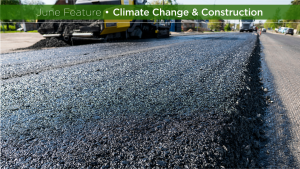Deep energy retrofits to existing buildings achieve two important objectives.
First, they revitalise buildings that have decades of useful life ahead of them. The carbons embodied in the original structure are held in place while eliminating any new emissions resulting from a new construction process.
Secondly, it is established that while simultaneously reducing ongoing GHG and carbon emissions, the investments in operational energy efficiencies are repaid many times over down the road.
These are truly worthy goals. However, most high-profile deep retrofits are today conducted on publicly owned facilities of some sort, often older municipally-owned or subsidized residential housing. The Ken Soble Tower in Hamilton, Ont. comes to mind.
Yet thousands of existing commercial and residential buildings are held by the private sector, often by private or publicly traded REITs (Real Estate Investment Trusts). In the absence of government grants and programs, persuading REIT operators to invest in their portfolio’s energy efficiency needs an added incentive.
One pathway is to work within the Canada Infrastructure Bank’s Building Retrofits Initiative (BRI) program, as Canadian REIT Avenue Living has done recently.
Another is green bonds. In fact, investors have shown a growing appetite for these financial instruments that address climate change.
The Chartered Professional Accountants of Canada describe green bonds as, “fixed-income debt securities that can be issued by governments, organizations or public/private companies, etc. to raise funds for projects that deliver environmental benefits, such as those focused on renewable energy, waste management, sustainable land use, clean transportation and technology and adaptation to climate change.”
Green bonds are being offered by governments around the world who then disperse the proceeds to qualifying projects. The first green bond was relatively small, about US$1.3 billion, issued back in 2007 by the European Investment Bank. Today, the global green bond market exceeds $1 trillion. In the United States, utilities and banks are the largest issuers of green bonds.
In Canada, Ontario was first to issue a green bond back in 2014, a modest $500 million, four-year issue. Ontario green bonds have since grown to 11 separate issues totalling $12.5 billion. However, it was only in July 2022 that Canada’s federal government issued its first green bond, a 7.5-year $5 billion issue.
According to its pre-issue announcement in March this year, the federal department of finance wrote, “Green bonds will support Canada’s green transition by offering investment opportunities in both climate and environmental measures, while also fostering the development of Canada’s sustainable finance market.”
The program specifically seeks engagement with the private sector.“Mobilizing private sector investment will play a critical role in Canada meeting its 2030 emissions reduction target, and in achieving net-zero emissions by 2050. New financing opportunities will speed up projects ranging from green infrastructure, clean tech innovation, nature conservancy, and more.”
The application of Canada’s green bond proceeds appear to be quite broad, and includes renewable energy, climate change adaptation and water and waste management. Energy retrofits of privately held commercial and residential properties would seem to be good candidates, particularly under the bond’s energy efficiency category.
“Under the energy efficiency category, the government contemplates investments in a range of projects, components and technologies aimed at promoting energy efficiency in buildings and fuel switching,” says Sustainalytics, a second-party bond evaluation consultancy.
Included is the installation of ground or air-source electric heat pumps, building insulation, air-sealing, as well as heat metering and thermostatic controls such as smart thermostats.
“As part of this category, the government may also finance building retrofits and new buildings,” Sustainalytics says.
For new construction, Canada’s green bonds will finance buildings designed as net-zero carbon, net-zero carbon ready or, in northern and remote communities, buildings built to the next highest applicable standard.
On the other hand, the minimum energy efficiency improvement threshold for retrofits is a low 20 per cent. While this might disappoint many advocates within the energy efficiency sector, it does represent a start in the right direction, which is better than no start at all.
John Bleasby is a Coldwater, Ont.-based freelance writer. Send comments and Climate and Construction column ideas to editor@dailycommercialnews.com.











Recent Comments